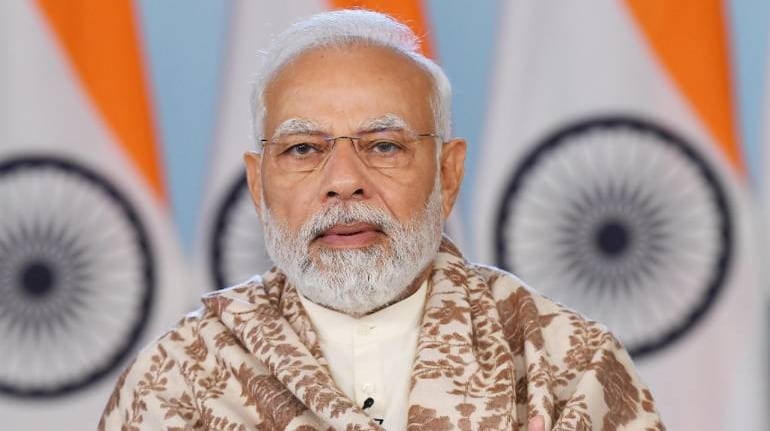According to the Prime Minister, the Agnipath recruitment scheme is a “transformative policy” that will be a “game changer” in strengthening the armed forces.

What is Agnipath Scheme?
- From now on, this will be the only method of recruiting soldiers for the three armed forces.
- Recruits under the scheme will be known as ‘Agniveers’.
- They can apply for regular employment in the armed forces after completing their four-year service.
- They may be given preference over others for various positions in other government agencies.
- The move is expected to reduce the average age profile of armed forces personnel from 32 to 24-26 years over time.
How the scheme works
- The recruitment process will begin in 90 days, with a planned intake of 46,000 young men and women this year.
- All three services will be enrolled through a centralised online system, with special rallies and campus interviews held at accredited technical institutes.
- The recruitment will be conducted on a “All India All Class” basis, with eligibility ranging from 17.5 to 21, and medical and physical fitness standards in accordance with existing norms.
The Agniveers’ Payouts
- Apart from risk and hardship and other allowances as applicable, the ‘Agniveers’ will receive an annual package ranging from 4.76 lakh in the first year to 6.92 lakh in the fourth year.
- On completion of service, they will receive approximately 11.71 lakh under the ‘Seva Nidhi’ package, including contribution and interest.
- The recruits will be required to contribute 30% of their monthly earnings to Seva Nidhi, with the government matching their contribution.
- Under the scheme, there will be no entitlement to gratuity or pension benefits.
- However, the ‘Agniveers’ will be provided a non-contributory life insurance cover of ₹48 lakh during their service.
Why are aspirants demonstrating?
- Armed forces contracting out: A four-year contract serves as the foundation of this scheme.
- Job opportunities for the majority: The majority of Army recruitment takes place in states such as Bihar, Jammu and Kashmir, Punjab, Himachal Pradesh, Haryana, Uttar Pradesh, Uttarakhand, and Rajasthan.
- Advantages and benefits: Many of these people prioritise job stability, including retirement benefits and pensions, over competitive pay.
- Uncertainty after commissioning: The majority of them will be forced to leave their jobs within four years, which contradicts their hopes and dreams.
- Casualization of Training: It is reported that it takes two to three years to train an army member, but soldiers will only be trained for six months as part of the Agnipath.
- Threats to national security: According to defence analysts, Russian soldiers who were only trained for a short period of time before going to war performed disastrously.
- Conflicts of interest: Concerns have been raised about how new recruits will be integrated into the existing system, in which most Army units are based on region, caste, or class.
Reasons for aspirants’ dissatisfaction
- Analysts frequently cite a shortage of gazetted officers in the Armed Forces, and there has been no recruitment in the last two years.
- Because they are now overage, many aspirants have lost their chance to join the Armed Forces as a result of the pandemic.’
- Unexpected reforms: The scheme, disguised as a push for “major defence policy reform,” is a shambles.
- Coaching gangs: Coaching mafias have been instrumental in inciting and provoking protesters.
Need for the Scheme: Official explanation
- Budgetary efficiency: With the largest volunteer army in the world, paying an increased salary and pension bill, given rising incomes all around, has steadily eroded the capital side of the defence budget.
- Preferential treatment: The government has already stated that job seekers will be given priority in the Central Armed Police Forces.
- Promotional avenues: One significant advantage of this scheme would be the service’s much lower age profile. It will broaden the opportunities for advancement for the permanent cadre.
- Aspirants will be able to pursue other careers with various departments and governments once they retire.
- Aspirants will be given preference, educational credits, and skill certificates to help them rehabilitate in other fields.
- Financial assistance: Those who want to be entrepreneurs will be given a financial package and bank loans, while those who want to continue their education will be given a 12 class equivalent certificate.
Way ahead
- Longer contract term: Extend the contract period for new recruits beyond four years. This issue is not addressed in the current clarification.
- Commission’s continuation: Reconsider the 25% re-enlistment at the end of the contractual period. For long-term positions, retention should be greater than 50%.
- Policy commitment for reabsorption: Obtain a binding commitment from CAPFs, state police forces, and other organisations that they are willing to absorb this trained military manpower for those leaving after a short service.
- Gradual shift in hiring policy: Continue with current regular enrolment in reduced numbers, and gradually transition to Tour of Duty once it has stabilised after five to ten years.
@the end
- A nation should never make compromises with the personnel who make up its armed forces’ fighting sinews.
- The best way to avoid this impression is to regard them as rough diamonds to be cut and polished to their maximum capabilities before being deployed in national defence.
- A diamond lasts forever, and our future service members deserve to give their all for the betterment of the country and their own lives.
Source: https://www.hindustantimes.com/india-news/agnipath-game-changer-for-the-military-says-pm-modi-101673888149674.html
